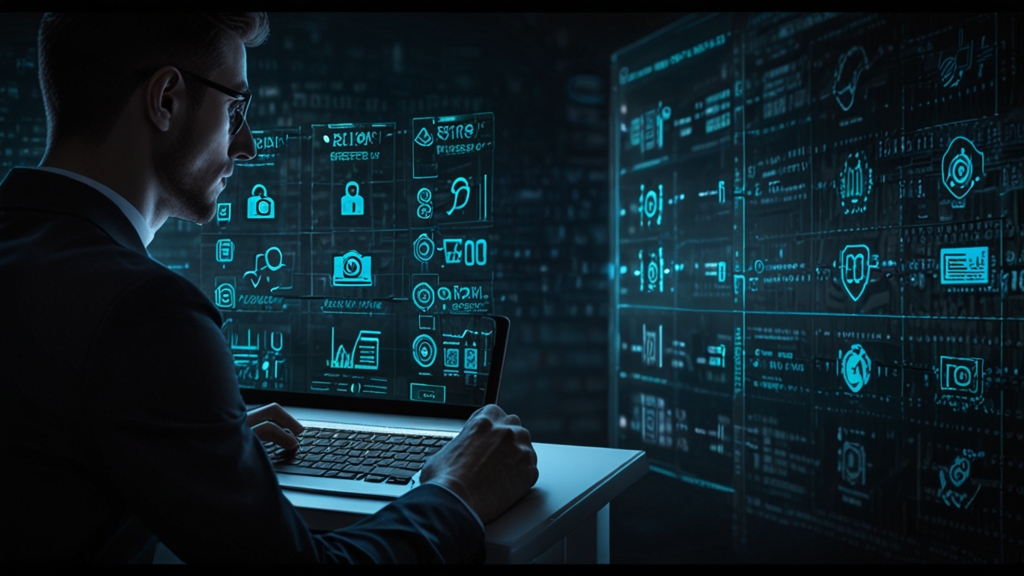Ultimate Cybersecurity Checklist for Every Digital User
In an increasingly digital world, cybersecurity has become a pivotal aspect of our daily lives. Protecting our online presence is more crucial than ever, as cyber threats continue to evolve and become more sophisticated. Here is an ultimate cybersecurity checklist that every digital user should follow to maintain safe and secure online activities.
1. Use Strong, Unique Passwords
Your passwords are the first line of defense against unauthorized access. Always create strong and unique passwords for each of your accounts. A strong password should be at least 12 characters long, including a mix of uppercase and lowercase letters, numbers, and special characters.
"Password managers can help you generate and store complex passwords, so you don't have to remember every single one."
2. Enable Two-Factor Authentication (2FA)
Two-Factor Authentication adds an extra layer of security by requiring a second form of identification beyond just your password. This could be a text message code, authentication app code, or even biometric verification. Enabling 2FA can significantly reduce the risk of unauthorized access.
3. Update Software Regularly
Software updates often contain important security patches that fix vulnerabilities. Ensure that your operating systems, applications, and antivirus software are always up to date. Enable automatic updates where possible to keep your systems protected.
4. Be Wary of Phishing Scams
Phishing is a common method used by cybercriminals to steal sensitive information such as usernames, passwords, and credit card details. Always be cautious of unsolicited emails, messages, or clickable links. Verify the source before providing any personal information.
"Look for signs of phishing, such as generic greetings, urgent language, and suspicious links. When in doubt, contact the supposed sender directly using a verified method."
5. Use a Secure Internet Connection
Public Wi-Fi networks can be unsecured and susceptible to hacking. Avoid accessing sensitive information or performing financial transactions over public Wi-Fi. If you must use public Wi-Fi, consider using a Virtual Private Network (VPN) to encrypt your internet connection.
6. Backup Your Data
Regularly backing up your data is a critical step in protecting against data loss due to cyberattacks, such as ransomware, or hardware failures. Store backups in multiple locations, including an external hard drive and a cloud-based service, to ensure you have access to your data in case of an incident.
7. Install and Use Antivirus Software
A reputable antivirus program can detect and remove malware before it can cause significant harm. Ensure your antivirus software is always up to date and perform regular scans of your device to identify and eliminate threats.
8. Practice Safe Browsing
Be cautious of the websites you visit and the downloads you make. Use secure browsers and avoid clicking on suspicious ads or downloading software from untrusted sources. Look for websites with HTTPS encryption, indicated by a padlock symbol in the address bar.
"Consider installing browser extensions that enhance security, such as ad blockers, anti-tracking tools, and secure password managers."
9. Educate Yourself and Stay Informed
The landscape of cybersecurity is constantly changing, with new threats emerging regularly. Take the time to educate yourself on the latest trends and best practices. Follow reputable cybersecurity blogs, subscribe to alerts from security organizations, and participate in cybersecurity training if available.
10. Monitor Your Accounts Regularly
Regularly review your financial statements and online accounts for any suspicious activity. Early detection can mitigate the impact of a cybersecurity incident. Set up account alerts to notify you of unusual activity or changes to your account settings.
Conclusion
Cybersecurity is an ongoing process that requires vigilance and proactive measures. By following this comprehensive checklist, you can significantly strengthen your cybersecurity posture and protect your digital identity. Remember, the key to effective cybersecurity is staying informed, being cautious, and consistently applying best practices.








